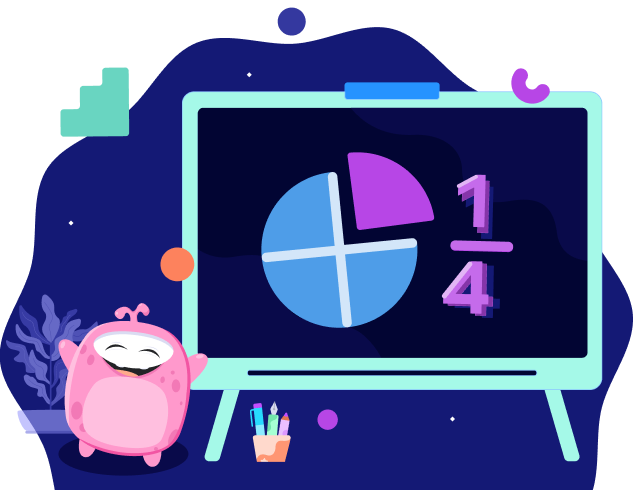- Parents
- Educators
- Math Games
- Reading Games
- PreK-5 Games
Watch your child become a fearless learner with our game-based online learning program scientifically designed for pre-k to grade 5 kids.
Kickstart your child's journey to success
Encourage your child to learn from a variety of fun exercises
Since my son has started using this App, he's been having so much fun and excelling at his math tests at school. This App is easy and fun. I highly recommend it!
Nico Robert
Parent of 2nd Grader
My son has struggled with math but didn’t want to practice. Both of us love SplashLearn because it has guided lessons and tons of fun games. It tricks him into practicing his math facts, which led to him liking math from higher grades!
Amy Jay
Parent of 4th Grader
It’s such a fun way to get kids excited about learning. The cool thing is that you can add multiple kids and keep a track of their progress through the parent app.
April Bayot
Parent of 1st, 3rd and 4th Grader
Jump into the Splashverse, where fun and learning never end
SplashLearn is an award-winning learning program that uses games and activities to engage kids in grades PreK- 5.
SplashLearn provides the perfect balance of fun and learning that builds math and reading skills in children. Over 59 million kids globally love SplashLearn.
SplashLearn offers a curriculum-aligned and personalized learning experience for kids in Pre-Kindergarten to Grade 5.
SplashLearn covers PreK to Grade 5 Math and Reading with 9,000+ learning games and educational activities.
SplashLearn is compatible with desktop, tablets, and smartphones.
SplashLearn provides an out-of-the-box learning experience that builds math and reading skills and boosts confidence in children—making them independent learners.
SplashLearn follows the Common Core curriculum for all of its learning content.
We give utmost importance to your child's safety and privacy. We do not collect personal information and ensure a child-friendly and ad-free learning experience.
If you are a parent, you can get started by clicking on the Signup button. If you are a teacher and want to use SplashLearn for your classes, please click on the same Signup button to continue.
As the skills get more difficult with the progression of grade, fraction games for kids serve to reinforce these skills that require lots of practice before complete understanding and mastery. Understanding fractions can help kids with dividing objects into equal parts and naming the fractions as well as learning how to properly add and subtract fractions.
Fraction learning games that use lots of visuals will help students to see the fractions in action and use their mind’s eye to help solve more difficult problems. They can help them to compare fractions and match fractions with mixed numbers.
Fraction activities involving pizza fractions are extremely engaging for kids to explore equivalent, like and unlike fractions as well as their comparison. Baking activities where kids convert fractions into their equivalent in order to use them in the best way possible are also a great way to practice fractions. Baking helps with converting mixed numbers as well as adding and subtracting fractions. Students can practice the concepts with a delicious result!
Fraction math games are an excellent way to simplify fraction learning. Identifying, comparing and converting fractions has never been easier! You can make math learning an easy joyride with interactive fraction games online.
Fractions as a concept can be slightly difficult to understand. This is mainly because fractions behave differently than whole numbers as fractions are less intuitive in comparison. When a child begins to understand fractions, it is no longer about counting numbers. Suddenly, they get to see that a whole can be split into halves, fifths or even thirty-sevenths. Fractions also follow certain rules that can seem unlikely at first, like having a bigger denominator makes a fraction smaller, etc. But all such rules are important to understand and remember. Fractions are also written differently.
This is why it is extremely important to focus on effectively introducing fractions to children as it lays the foundation for complex topics that lie ahead in their math journey. Fractions should be introduced to the young learners by relating them to real life, using a lot of visuals and contexts, and by making them fun and engaging.
We can make fractions fun for kids through games and activities that involve real life examples. Fraction games online like adding and subtracting fractions using manipulatives, choosing the correct partition, counting equal parts, writing whole numbers as fractions, and many more cater to grade 3, 4 and 5 while simultaneously making fraction learning exciting.
Fun fraction games and activities help kids in mastering tricky concepts with ease. They turn fraction fiasco into fraction fun! They provide flexibility to learn, allow children to understand mathematical concepts at their own pace and include all the general benefits of games as well.

